 |
 |
 |
| |
Enhancements to the Trofile HIV Co-receptor Tropism Assay Enable Improved Detection of CXCR4-using Subpopulations and Earlier Detection of CXCR4-using Viruses in Sequential Patient Samples
|
| |
| |
Reported by Jules Levin
Targeting HIV Entry: 3rd International Workshop
December 7-9, 2007
Washington, DC
Authors: Jacqueline Reeves, Dong Han, Peter Hunt, Yang Liu, Terri Wrin, Wei Huang, Steve Deeks, Christos Petropoulos, Jeannette Whitcomb, Eoin Coakley & Neil Parkin
BACKGROUND
Several entry inhibitors which block infection via CCR5 are in clinical development and the CCR5 antagonist maraviroc has recently been approved for use in treatment experienced individuals with R5 virus
The Trofile assay is useful for selection of patient receiving these inhibitors and determines if a patients viral population is CCR5- (R5), CXCR4- (X4) or dual/mixed- (DM) tropic
The positive and negative predictive value of Trofile has been demonstrated in CCR5 antagonist clinical trials.
An enhanced sensitivity Trofile assay has been developed to increase minor CXCR4-using variant detection in the event that this will further optimize selection of patients who may benefit from therapy with entry inhibitors targeting
CCR5. Immediately below are the results of a test (SCOPE Cohort) of the enhanced assay and following these results are discussion and further description of the Trofile standard and enhanced assays.
SCOPE Cohort
Treatment experienced cohort with incomplete viral suppression on ART
--Representative of initial target group for maraviroc therapy
258 sequential samples obtained from 77 patients previously tested in Trofile assay
--11 patients identified with tropism switches: 1 patient with fluctuating tropism calls around the detection limit of Trofile
AUTHOR SUMMARY
Enhanced Trofile assay optimized to increase DM virus RLUs on CXCR4+ve cells
Improved detection of minor CXCR4-using variants in env clone mixtures
Earlier detection of CXCR4-using (and R5) viruses in longitudinal samples from treatment experienced individuals
Tropism calls reclassified in 8% samples from treatment experienced individuals with incomplete viral suppression on ART
Current Objectives
Evaluating additional patient cohorts and CCR5 inhibitor clinical trial samples to determine the clinical utility of the enhanced Trofile assay
Performing a CLIA validation of the enhanced assay to enable use for patient testing
Scope Cohort - Tropism in Standard and
Enhanced Trofile Assays
-- 1 X4 and 19 R5 samples were reclassified DM
-- Enhanced assay reclassified tropism in 20 / 258 samples (~8%)
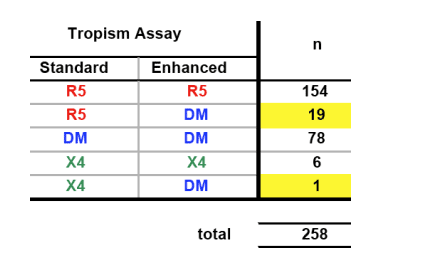
Tropism Call Changes between Standard &
Enhanced Trofile
Enhanced assay reclassified tropism in 20 / 258 samples
Reclassified samples attributed to 14 / 77 patients:
-- 7 of these patients were in the group of 11 patients with
tropism switches previously detected by standard Trofile
· Including 1 patient with fluctuating tropism calls
-- 7 patients had R5 virus only detected by standard Trofile
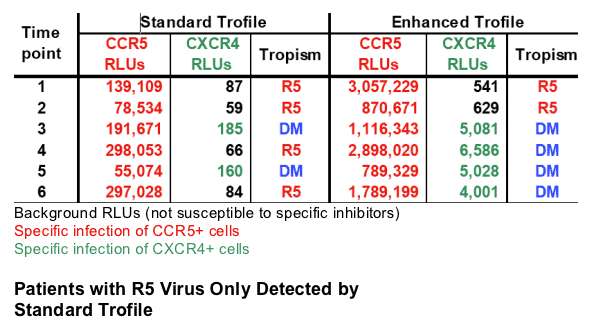
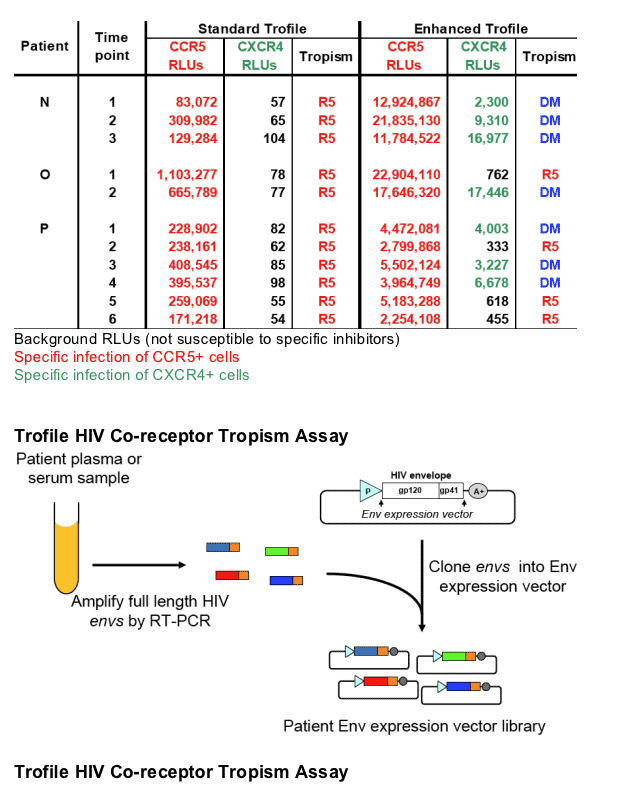
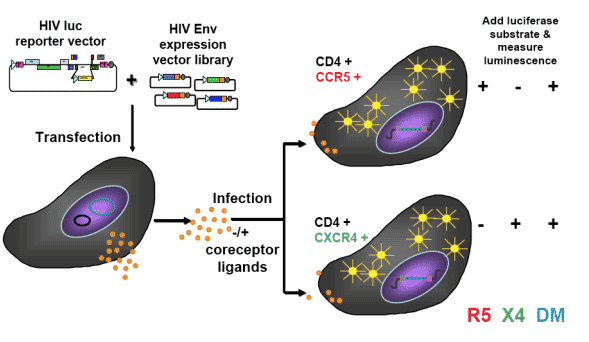
Sensitivity of Trofile
Current sensitivity from CLIA validation experiments
-- 100% sensitive at detecting 10% minor variants, 85% sensitive
at detecting 5% minor variants in a mixed virus population (levels below 5% were not tested)
8-10% treatment experience patients enrolled in clinical trials of vicriviroc and maraviroc have changes in tropism calls between screen (R5) and baseline (DM) samples
-- Reduced virologic response
Minor CXCR4-using variants below the detection limit of Trofile can sometimes be identified by clonal analysis of env populations
-- May emerge during CCR5 antagonist therapy and limit treatment response
Enhanced Sensitivity Trofile Assay
An enhanced sensitivity Trofile assay has been developed to increase minor CXCR4-using variant detection in the event that this will further optimize selection of patients who may benefit from therapy with entry inhibitors targeting
CCR5
--A broad range of assay modifications were evaluated to maximize sensitivity, including varying virus input, (co)receptor expression levels and optimizing transfection and infection conditions
-- A combination of conditions designed to enhance DM virus infection on CXCR4+ cells, while maintaining infection specificity, were selected
Comparison of Luciferase Activity (RLUs)
between Standard & Enhanced Trofile Assays
~180 and 40-fold median increase in DM virus RLUs on CXCR4+ and CCR5+
cells, respectively. Specificity for detection of R5 and X4 Envs preserved
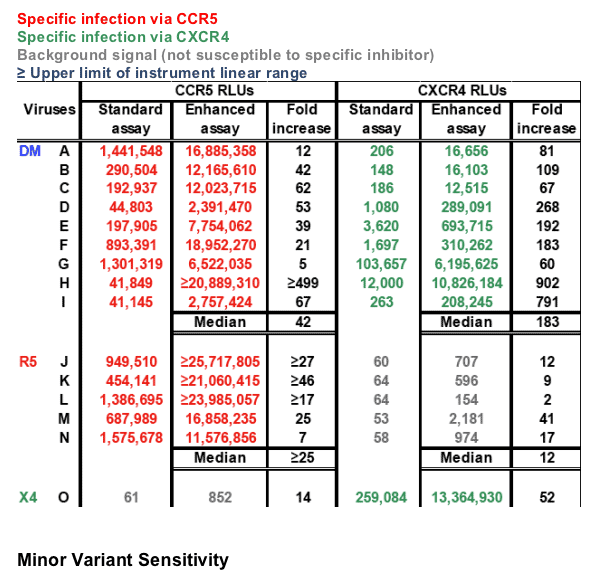
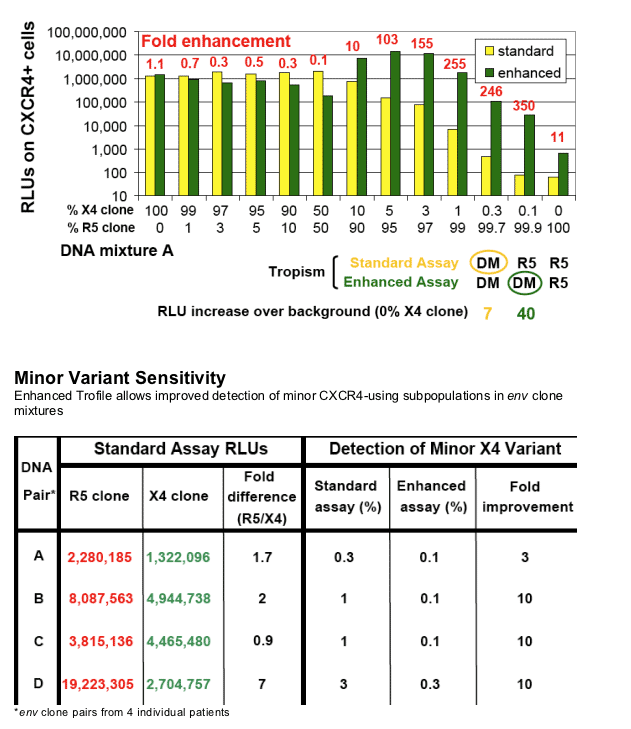
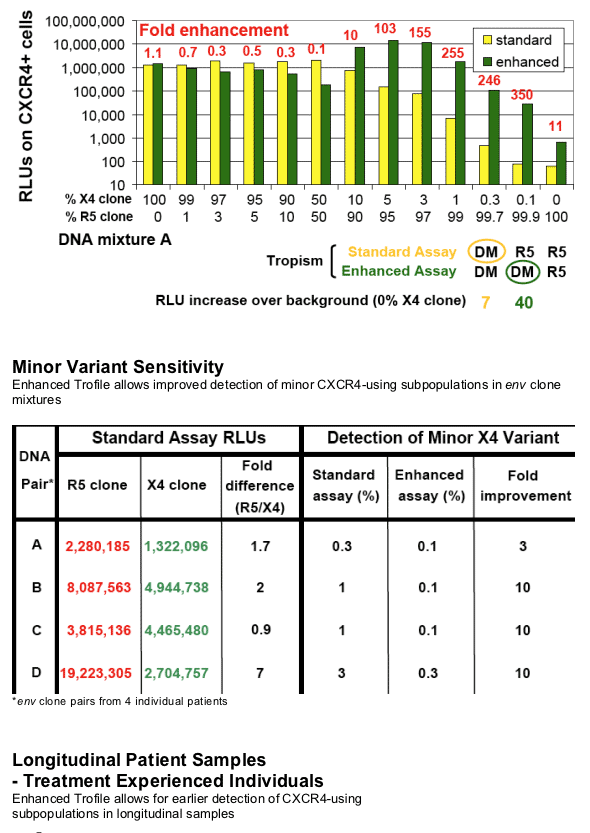
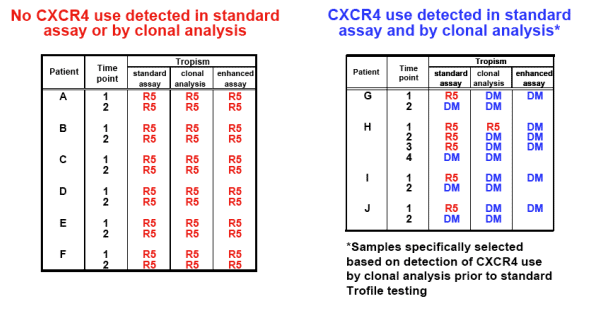
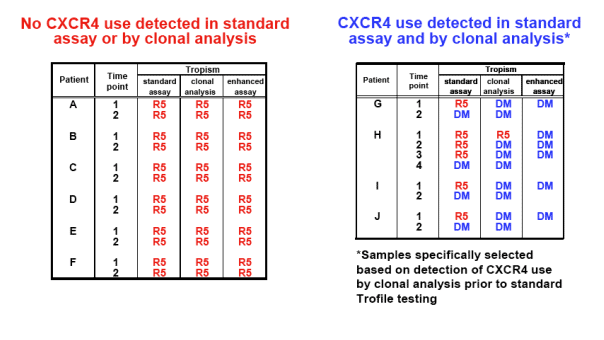
|
| |
|
 |
 |
|
|